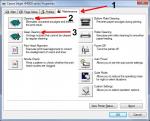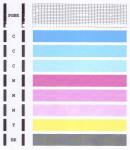l_d_allan
Fan of Printing
Note ... my attempt at a HowTo: is for dye based carts. I'm basically ignorant about pigment carts. So far, I've never use my inkjets for text ... I have a LaserJet for that. In the future, I may use the iP4500 for text.tsu3000 said:I agree there needs to be a latest "howto" guide regarding pigment inks for Canon carts.
Yes ... "D". I'm not really sure if it worked or not. Sorry. The original print-head on my Pro 9000-2 was having erratic problems with the Magenta head ... fine one day, seemed clogged the next. The nozzle check was flawed, but more of a mottled look than missing rows that would indicate a clogged head.Going down your list I noticed you use Windex. Is that the version with "Ammonia D"? Did it work?
I described the problem to Canon tech support, and since the printer was still under warranty, they sent a replacement print-head. I used the original print-head to try different things, but I couldn't really tell what worked since the print-head may have had underlying electrical problems.
Sorry ... I think I lost track of the point of the OP, and tackled a different question. I'd been hoping one of the really experienced Inkjet Masters on the forum would provide something like:To recap, all my photo colours, the CLI OEM carts with HobbiColors ink, print the test pattern without any issues. Only my pigment PGBK is causing problems.
* Try A
* If that doesn't help, try B
* If that doesn't help, try C
etc.
I hadn't found something like that, so decided to draft my speculations as to a reasonable order to tackle a clogged print-head, with the hope that revisions/improvements would be part of replies. It doesn't particularly bother this de-clogging newbie to be mistaken, as I feel I learn the most the fastest when a more experienced person corrects my misconceptions, and/or clarifies where I have a flawed understanding of what is going on.



